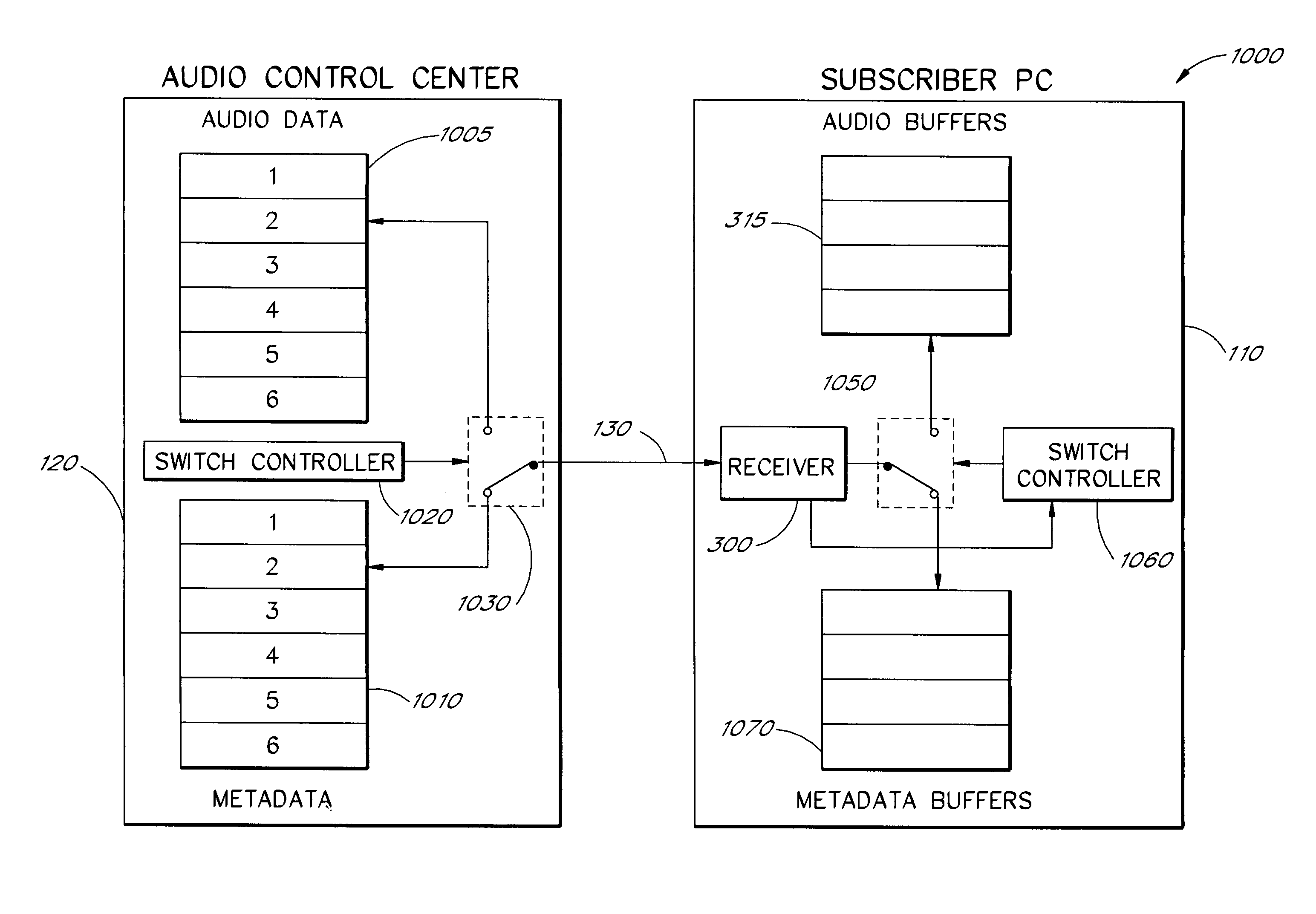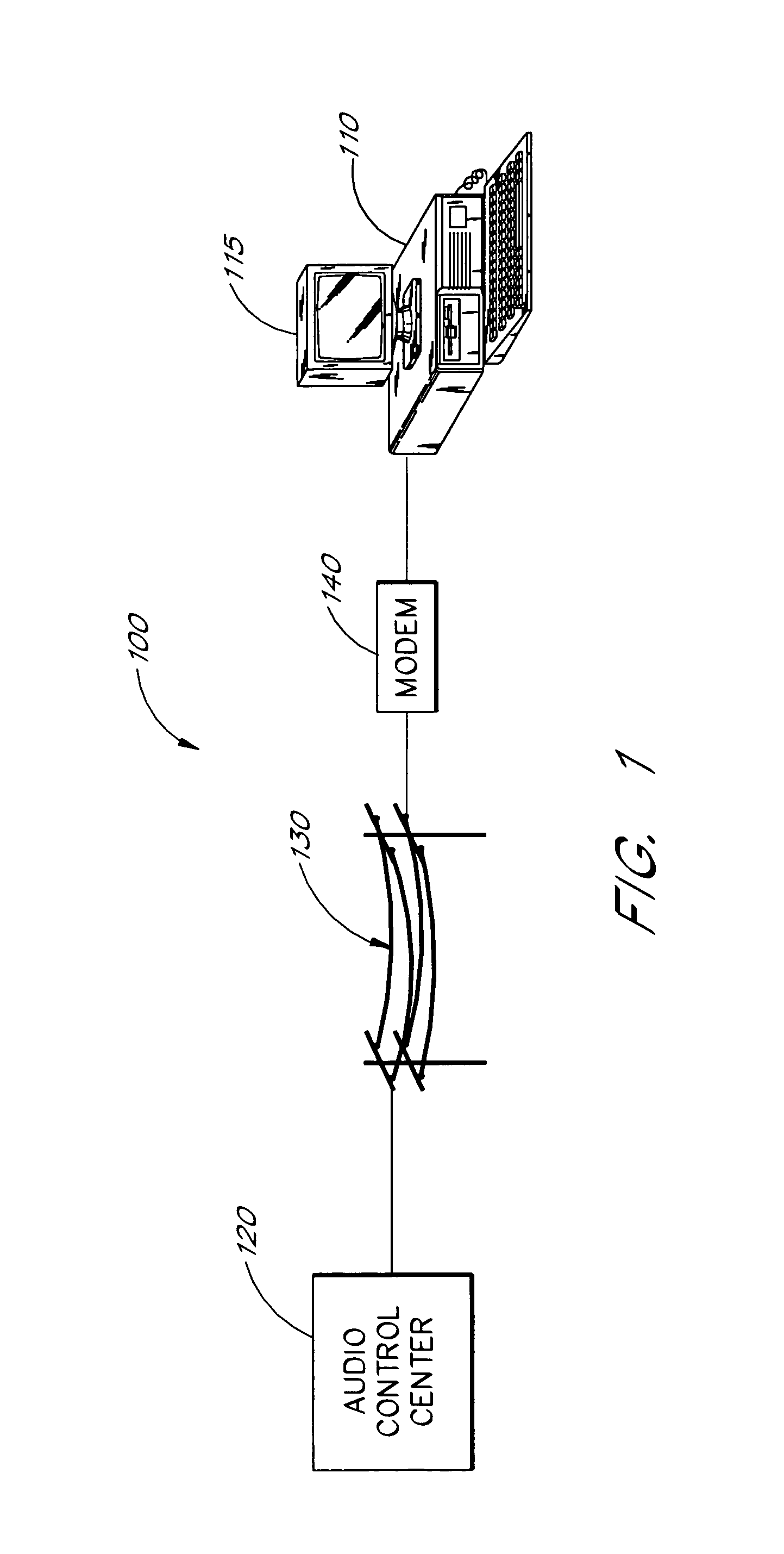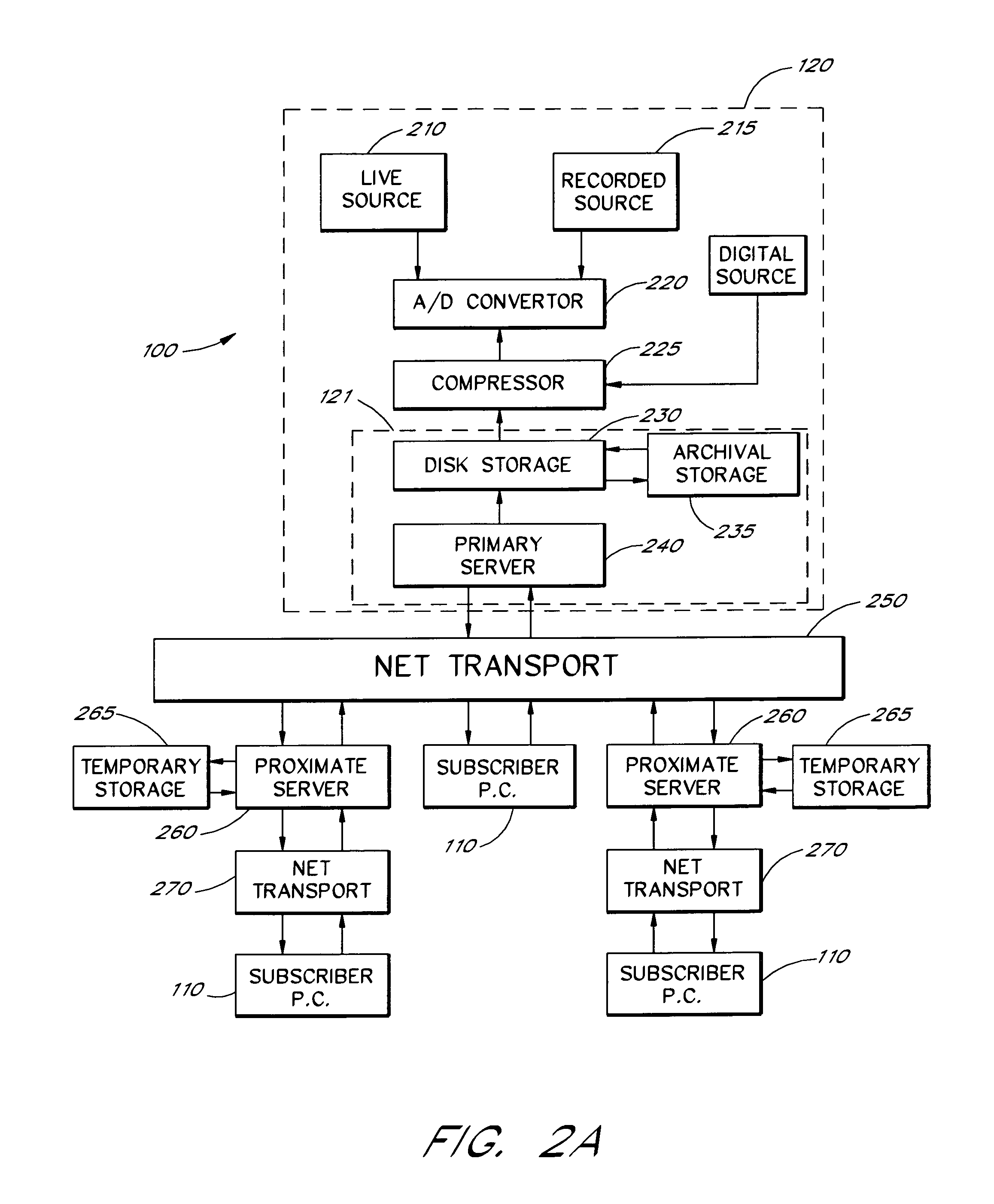Multimedia communications system and method for providing audio on demand to subscribers
a multi-media communication system and audio on demand technology, applied in the field of multi-media computer communication systems, can solve the problems of increasing the difficulty of providing real-time audio on demand, prohibitively expensive systems, and not being available to the mainstream personal computer user, and achieves increased control over the received audio data, high quality, and high quality.
- Summary
- Abstract
- Description
- Claims
- Application Information
AI Technical Summary
Benefits of technology
Problems solved by technology
Method used
Image
Examples
Embodiment Construction
[0031]FIG. 1 shows a simplified schematic block diagram of an “audio-on-demand” system constructed in accordance with the present invention. The system 100 comprises a subscriber personal computer (PC) 110 (e.g., an IBM PC having a 486 Intel Microprocessor), having a video display 115. The subscriber PC 110 connects to an audio control center 120 over telephone lines 130 via a modem 140.
[0032]In operation, a user calls the audio control center 120 by means of the modem140. The audio control center 120 transmits a menu of possible selections over the telephone lines 130 to the personal computer 110 for display on the video display 115. The user may then select one of the available options displayed on the video display 115 of the computer 110. For example, the user may opt to listen to a song or hear a book read. Once the audio data has been transmitted, the modem 140 disconnects from the audio control center 120.
[0033]FIGS. 2A–2D and FIG. 3 are schematic block diagrams which show, i...
PUM
 Login to View More
Login to View More Abstract
Description
Claims
Application Information
 Login to View More
Login to View More - R&D
- Intellectual Property
- Life Sciences
- Materials
- Tech Scout
- Unparalleled Data Quality
- Higher Quality Content
- 60% Fewer Hallucinations
Browse by: Latest US Patents, China's latest patents, Technical Efficacy Thesaurus, Application Domain, Technology Topic, Popular Technical Reports.
© 2025 PatSnap. All rights reserved.Legal|Privacy policy|Modern Slavery Act Transparency Statement|Sitemap|About US| Contact US: help@patsnap.com



